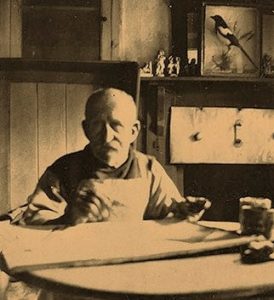
1855 - 1942
Alfred Wallis

description
Alfred Wallis was an English sailor and self-taught painter, a bright and original representative of naive art.
His paintings devoted to the depiction of Cornwall are in demand both as a valuable cultural value with its purity and expressiveness, and as an opportunity to see the famous terrain in its glare of the early 20th century. The house of Wallis in the very center of Saint-Yves welcomes those who wish to see the place, where the naive-style artist, famous at his old age, lived and worked. The cottage that is working as a mini-hotel is full of copies of his paintings, the originals of which are in the prestigious Tate Metropolitan Gallery.
Key ideas:
– Barely literate sailor and fisherman Alfred Wallis is a classic example of a self-taught artist who instinctively found a way to capture his world through painting. His art grew out of the Cornish Sea and the land, reflecting the essence of these places. Most often it was the landscape-marina with boats and ships, painted from memory.
– For more than a decade, Alfred was immersed in the life of sailors and the work of fishermen; he did not need additional observations and fictions. Less often, he depicted streets with buildings and trees. Among the plot paintings, the strongest one is «Alba crash», created from his personal expressions and therefore expressing a genuine emotion from an event when a ship split in half by huge water walls waits for salvation from another crew, but that one is still far away.
– In the pictures, the perspective is completely ignored; the scale of the objects depends on their relative importance in the plot. For instance, a fish can be bigger than a boat. Wallis worked in the style of cartographic images. Despite the obvious naivety, the paintings of the retired seaman are thought out deeply and carefully, clearly composed.
– Wallis tried to create a true image and convey the real color gamma. However, the artist was poor and mostly used simple material for painting ships, experimenting with composite colors. The basis was not canvases, but cardboard packing boxes, boards and cans. All this usually was of irregular shape, which also became a distinctive feature of the self-taught painter.
– Despite the fact that famous people, artists, critics and art dealers, interested in his work, purposely came to see and buy his paintings, Wallis kept on using pieces of cardboard for work. He insisted that he had no time to correct the paintings, if a wrong paint lied in improper place. Occasionally, he added brighter yellow, reddish brown and green colors to the color gamma along with his favorite black and blue colors.
1855
1870
1875
1890
1912
1920
1928
1930
1942
The birth of the artist
Became a sailor on a merchant ship
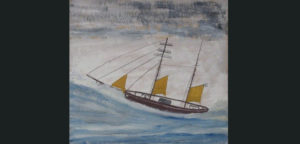
He married Susan Ward
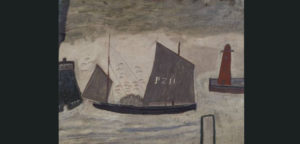
The family moved to the fishing village
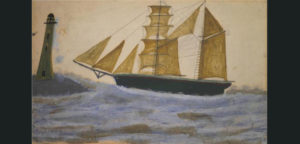
His business closed
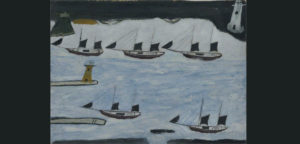
He began to paint “for the ride”
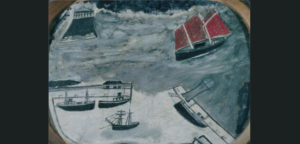
Got acquainted with avant-garde artists
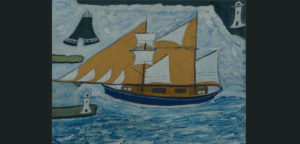
“Blue ship”, “The wreck of Alba”
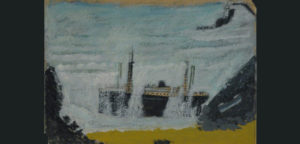
The death of the artist
